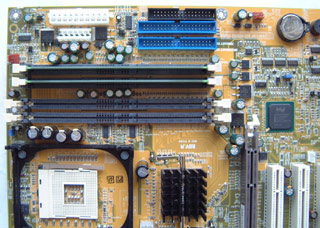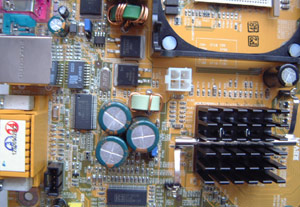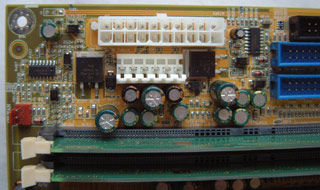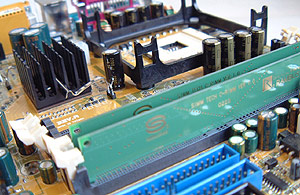Onboard
components comprise of IDE RAID, Intel 10/100 LAN and 5.1 audio. If that's not
enough for you, there are five PCI's and the ever useful CNR
slot.
As you can see, the NT72-SA is a very plain
motherboard. DFI know that their customers are more interested in functionality
and price more then flash. It's nice to see DFI place the main IDE/floppy drive
connectors as well as the main ATX and auxiliary power connectors to the right
of the DIMM slots - in this position they are not in the way of the other
expansion cards in the computer. The board requires all three sets of power
cables, including the older AT style power connector by the main 20-pin ATX
power connector.


All three fan headers of the board are easily
accessible which is extremely helpful. The front panel LED's are also quite well
labelled, you shouldn't need to refer to the manual when you're installing
them.


While working with the NT72-SA motherboard I noticed that half the components
were well labelled (like the primary IDE channels) while the rest were not (like the
RAID IDE channels).
These days it seems, computer users are more
spoiled then in the past and having to manipulate jumpers can be a real chore.
It would have been nice if DFI could have incorporated these jumper settings
into the BIOS.
Lastly, because of the rather large PCB, users of mid tower ATX
cases or smaller may have a difficult time installing the board into their
case.
